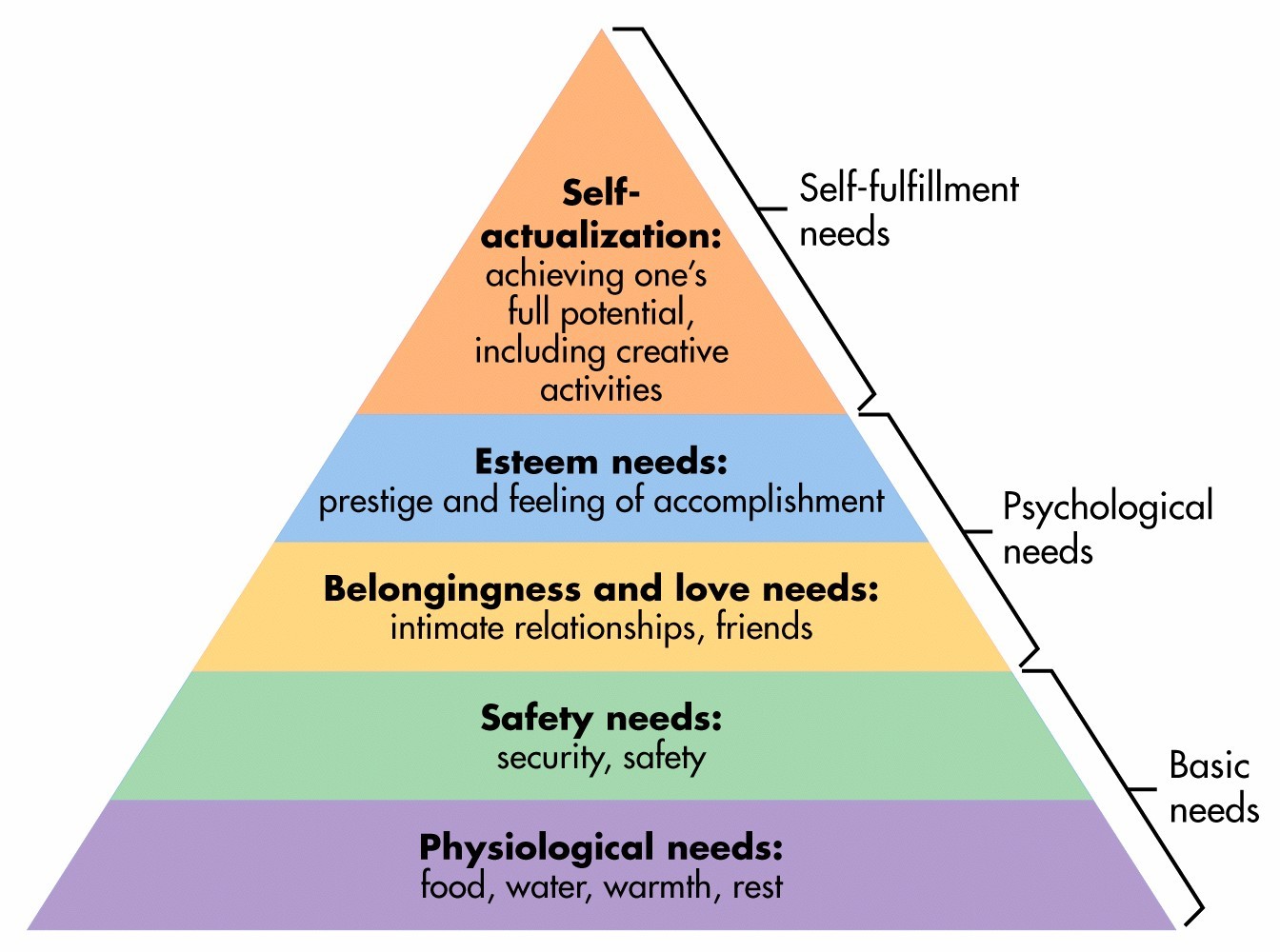Season Two, Episode Two. Podcast recap! (And if you missed the podcast, you can find it here.)
Podcast Recap: Season 2, Episode 2
This episode we focused on telling poor imaginary Peter that he didn’t get that raise he was expecting. “No raise for you Peter!”
Why is it so hard? It should be pretty logical, right? Wellll, not always.
It’s a Touchy Subject

Maslow’s Hierarchy of Needs
Maslow’s Hierarchy of Needs tells us why the issue of pay raises, salaries, or compensation of any kind is especially difficult to address with people.
A person’s total compensation package is highly personal and strikes right at the heart of an individual’s ability not only to provide physiological needs for him/herself and his/her family, but also to build their own self-esteem, and to feel valued and worthwhile.
Essentially, you are impacting a person’s most basic and psychological needs.
It’s for this reason that you have to tread lightly when responding to someone who is angry about money. As you can imagine though, we strongly suggest you DO have that conversation. Why?
So many reasons.
- It’s respectful.
- It engages people.
- It builds your trusting relationship with that person.
- It sets expectations for the future.
- It’s just the right thing to do.
Peter Didn’t Get the Raise He Expected
Yup, back to poor Peter. In our last blog we focused on how to give Peter impactful (and kind) feedback about the quality of his work. Now we are faced with telling Peter that he is not getting the raise he wanted, either because he suddenly stormed into your office to discuss it, or because it’s part of your yearly salary or performance management conversation.
So what do you do?
- Say the hard thing. Be clear and specific.
- Be quiet and wait for the response.
- You’re hoping they will say, you’re right. What can I do to improve?
- It’s also possible they will be super angry.
- If they’re angry… well, read on.
Let’s say in this case, Peter is really angry. so, you give him all the logic of why he got what he did, what the protocol was, and explain things in very detailed words. All better, right?
No. Not right.
When we’ve talked about the Change Curve with clients and students, we’ve highlighted that when people are angry, they simply can’t hear you. Your best bet is to simply listen and let them vent.
The simple act of Listening is respectful, engaging, and HARD. Often people are taken back by anger and feel attacked and tempted to respond in kind.
So our tip for you today, to help you metaphorically throw the bucket of water at the anger, is the LESTER tool.
LESTER

LESTER is a great mnemonic to help you remember the steps when being confronted with anger in the workplace.
- Listen: Take a minute to breathe, and then just listen. Let the person vent, ask them clarifying questions, maybe even use “Tell Me More,” and listen. Really listen. Be engaged and be present. (Peter, tell me what’s got you so upset.)
- Echo: Clarify what you heard them say. It’s possible that, from all the venting, you will pull out the wrong issues or misunderstand what Peter said. (Ok Peter, it sounds like you are frustrated about the amount of your pay raise, and also – maybe even mostly – a little surprised by it. Have I got that right?)
- Sympathize: (Or perhaps Empathize, which messes up the mnemonic, but whatever…) Recognize their frustration. Tell them you can see their anger. Do NOT say “I’m sorry you feel that way,” which is passive aggressive and only makes people feel worse. Just let them know that you heard them and you can understand that they are upset. (Well I can see that your upset, and I can imagine how frustrated you must feel.)
- Thank: Yup, that’s right. Thank them for letting you know. It’s as simple as saying, “thanks for coming to me.” This ensures that people will continue to come to you, which is what you want as a manager. It’s way better than having people complain about you at the water cooler. The only thing that does is ensure you never have your finger on the pulse of the team. (Thanks for coming to me. I appreciate it.)
- Evaluate: Now you want to work on solutions to the problem. It might mean you change a decision or a policy, or it might mean that you discuss things in advance, or it might mean working on ways for Peter not to be so surprised in the future. (Well, let’s talk about how to make sure you’re not taken by surprise next time. You know the pay cycle and the policy for it. How can we work together so that you get what you’re expecting?)
- Resolve: This final step is just about repeating any agreed on actions as the person walks out the door. (So what we are going to do is set quarterly reviews to talk about your performance. You’re also going to work on your report-writing skills, and I’m going to set you up with some job shadowing. Sound good?)
This whole conversation can happen in five minutes. The more you practice, the easier it gets not only to avoid escalating, but also to actually de-escalate and build the relationship.
Give these tips a try, let us know how it went on Twitter at @whiteboardcons and check out the rest of our podcast series on our homepage at www.whiteboardconsulting.ca.
Until next time,
Ruth.

